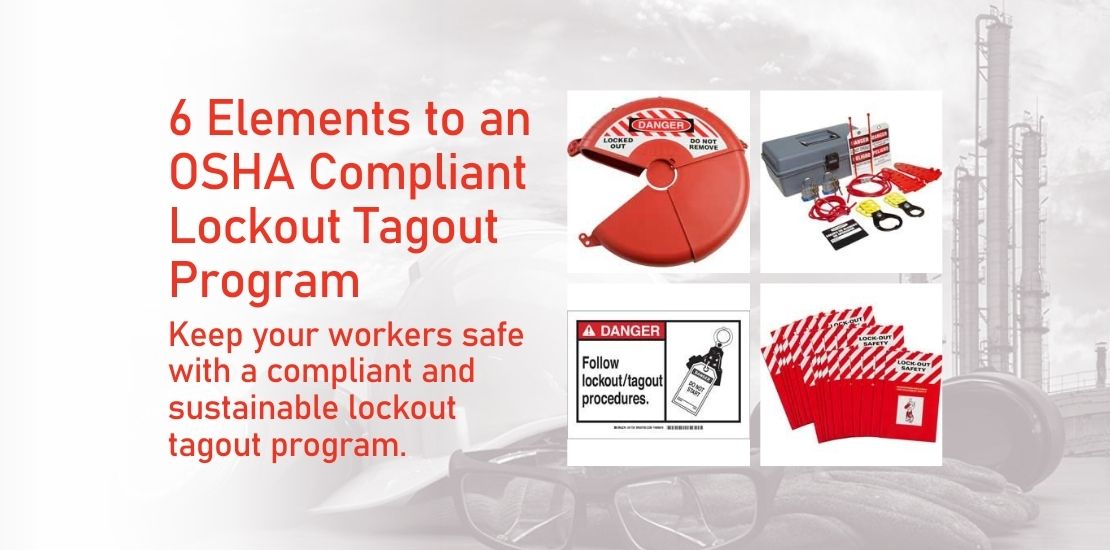OSHA's Lockout Tagout (29 CFR 1910.147) regulatory standard requires that, "The employer shall establish a(n) (energy control) program consisting of energy control procedures, employee training and periodic inspections to ensure that before any employee performs any servicing or maintenance on a machine or equipment where the unexpected energizing, startup or release of stored energy could occur and cause injury, the machine or equipment shall be isolated from the energy source and rendered inoperative."
6 Key Elements to a Successful Lockout Tagout Program
1. Develop and Document a Lockout Tagout Program or Policy
The first step to lockout tagout success is developing and documenting your equipment energy control policy/program. A written lockout document establishes and explains the elements of your program.
It’s important to take into account not only OSHA’s guidelines, but also custom requirements for your employees to ensure they can understand and apply the program to their workday.
A program is not a one-time fix; it should be reviewed on an annual basis to ensure it’s still relevant and effectively protects employees. Creating a lockout program should be a collaborative effort from all levels of the organization.
2. Write Machine/Task Specific Lockout Tagout Procedures
Lockout procedures should be formally documented and easily identify the equipment covered. The procedures should detail the specific steps necessary for shutting down, isolating, blocking and securing equipment to control hazardous energy, as well as steps for the placement, removal and transfer of lockout/tagout devices.
Going beyond compliance, we recommend creating best practice procedures that include machine-specific photos identifying energy isolation points. These should be posted at the point of use to provide employees with clear, visually-intuitive instructions.
3. Identify and Mark Energy Isolation Points
Locate and identify all energy control points, including valves, switches, breakers and plugs, with permanently placed and standardized labels or tags. Keep in mind that these labels and tags should be consistent with the equipment-specific procedures from Step 2.
4. Lockout Tagout Training and Periodic Inspection/Audits
Be sure to adequately train your employees, communicate processes and conduct periodic inspections to ensure your program is running effectively. Training should not only include OSHA requirements, but also your own specific program elements, such as your machine-specific procedures.
When OSHA evaluates a company’s lockout tagout compliance and performance, it looks for employee training in the following categories:
- Authorized employees. Those who perform the lockout procedures on machinery and equipment for maintenance.
- Affected employees. Those who do not perform lockout requirements, but use the machinery that is receiving maintenance.
- Other employees. Any employee who does not use the machinery, but who is in the area where a piece of equipment is receiving maintenance.
5. Provide Proper Lockout Tagout Devices
6. Sustainability
Take a continuous improvement approach to your lockout program. By consistently reviewing your program, you are creating a safety culture that proactively addresses lockout tagout. This allows your company to focus on maintaining a world-class program, instead of starting from scratch each year and reacting only when something goes wrong.
Not sure you can maintain the costs of sustainability? Consider the costs of re-creating your lockout tagout program each year – when you could simply maintain your program throughout the year to enhance your safety culture while reducing money spent re-inventing the wheel. When looking at your program from this perspective, it’s clear that a sustainable program helps you stay one step ahead, while saving time and money.


